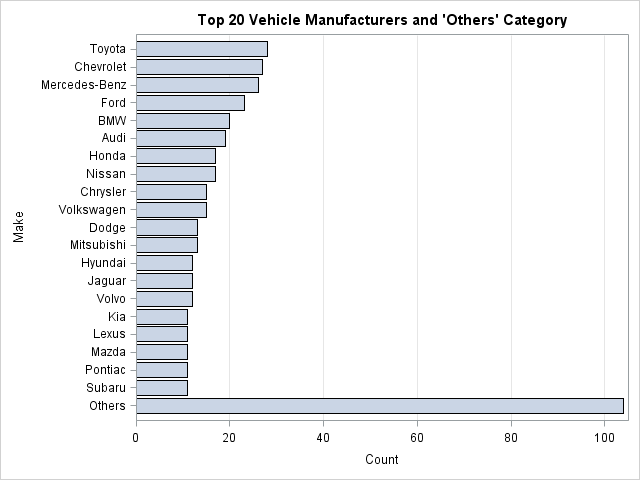
I wanted to write a blog post about the "Table distribution" in SAS. The Table distribution, which is supported by the RAND and the RANDGEN function, enables you to specify the probability of selecting each of k items. Therefore you can use the Table distribution to sample, with replacement, from









